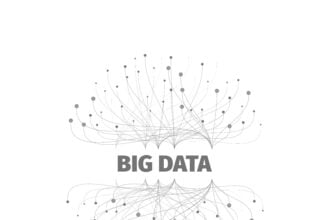The news last week that Kohlberg Kravis Roberts & Co. was giving Eastman Kodak a cash infusion of $400 million prompted me to reflect on the changing fortunes of the yellow box over the last fifteen or so years. For most of my lifetime, Kodak defined consumer photography. Sure, there were some threats from Fuji and point-and-shoot 35 mm camera makers, but for the average snapshooter, or the parents of newborns, Kodak pretty much owned the market. And they understood the need to make photography simple.
They had a great business – revenues and profits were tied to the number of images that people captured on film. The more pictures people took, the more film they used, and the more paper and chemicals processors consumed to turn those images into prints. Kodak perfected the model over the years, as processing services became almost instantaneous, and consumers could get two prints of every image for almost no incremental cost (but doubling the volume of Kodak paper that was sold–a big advantage in an economies-of-scale business).
Kodak’s consumer marketing strategy was built around the belief that the primary job that consumers were hiring cameras, film, and …
The news last week that Kohlberg Kravis Roberts & Co. was giving Eastman Kodak a cash infusion of $400 million prompted me to reflect on the changing fortunes of the yellow box over the last fifteen or so years. For most of my lifetime, Kodak defined consumer photography. Sure, there were some threats from Fuji and point-and-shoot 35 mm camera makers, but for the average snapshooter, or the parents of newborns, Kodak pretty much owned the market. And they understood the need to make photography simple.
They had a great business – revenues and profits were tied to the number of images that people captured on film. The more pictures people took, the more film they used, and the more paper and chemicals processors consumed to turn those images into prints. Kodak perfected the model over the years, as processing services became almost instantaneous, and consumers could get two prints of every image for almost no incremental cost (but doubling the volume of Kodak paper that was sold–a big advantage in an economies-of-scale business).
Kodak’s consumer marketing strategy was built around the belief that the primary job that consumers were hiring cameras, film, and processing for was documentation of life’s special (”Kodak”) moments. Consumer research, for example, showed dramatic increases in picture taking following the birth of a first child (with lower peaks for each subsequent child!).
Kodak’s fortunes in consumer photography were tied to this belief and their initial strategy in response to digital photography included a continued emphasis on simplifying the process (cameras with printer docks, for example) and capturing a big chunk of the consumables volume, primarily photo paper. But something strange happened with digital photography. The relationship between the number of images captured and the number of prints produced pretty much evaporated. This was a clue that maybe there was a different job that digital photography was doing for consumers. And it looks like that job is sharing experiences. Are cellphone cameras popular because they eliminate one device or because they allow people to share images and experiences almost immediately?
The documentation job is no doubt still important, but digital photography has revealed that there was at least one other important job. Because digital does that job better than film photography (no need to print images to share them, for example) and does the documentation job for consumers at least as well as film, the value network has shifted dramatically.
This is a common dynamic with disruptive innovation. The success of the incumbent technology obscures the fact that it may not do all the jobs it is hired for equally well, or not as cheaply as it could be done. AT&T, for example, when confronted with competition from the likes of MCI and Sprint, assumed that the “job” they were doing for consumers was providing access to any telephone in the world. It turns out that the job a significant number of consumers wanted to perform was connecting to a very small number of specific telephone numbers, and MCI and Sprint enabled that at a much lower price. The rest of that story is telecommunications history.
Copyright 2009 by David G. Bakken. All rights reserved.







